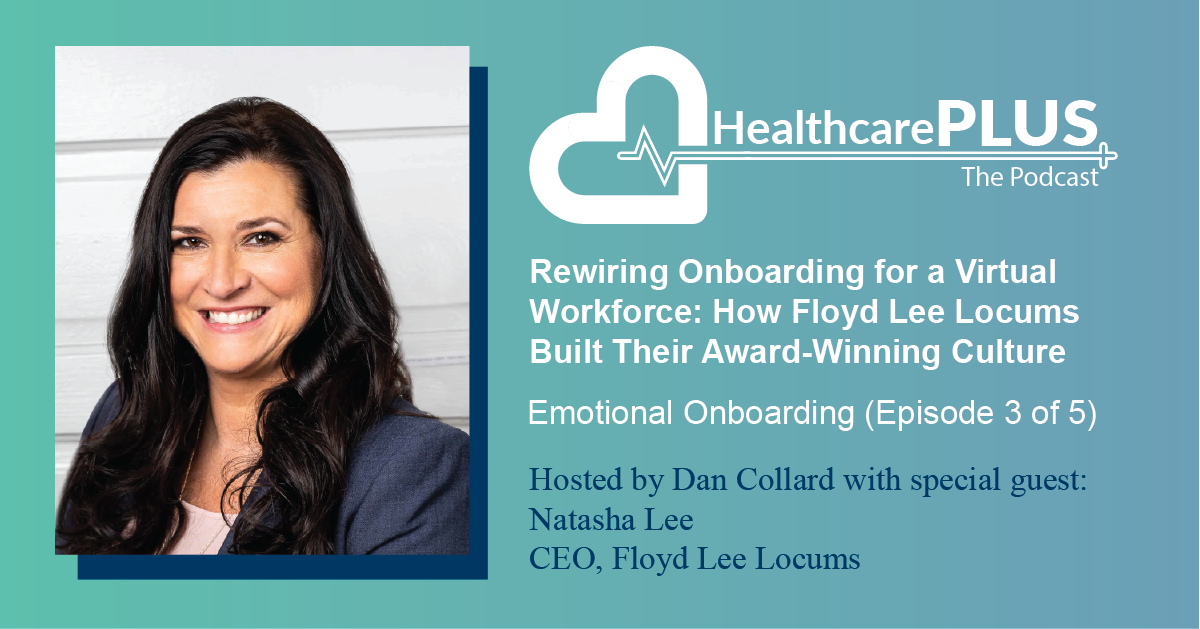Belonging is a powerful force. When employees feel it, the whole organization thrives. Teams are stronger and more productive. People are more receptive to be coached. High performers become “ambassadors” who bring in other high performers.
It makes sense to create belonging right away, which is why it’s a central tenet of our Emotional Onboarding™ system. But what if you’re hiring remote employees? How do you create belonging then?
In a recent podcast with Dan Collard, Natasha Lee, the CEO of Floyd Lee Locums (FLL), answers that question. Her healthcare staffing company has been recognized as #1 on Modern Healthcare’s Best Places to Work list for two consecutive years—despite having a team that’s 90% virtual.
Here are some of her tips to create a sense of belonging in remote employees from Day 1:
Set high expectations in the interview process. This eliminates any surprises when the person starts working. It also allows candidates to self-select out if they don’t have the same ideas about engagement and purpose.
Onboard employees in person. FLL brings every new hire to corporate for a week of training and getting to know coworkers. This includes casual gatherings like lunches, dinner, and drinks. It’s a celebration. “We’re glad you’re on board and beginning a new chapter with us.”
Get peers involved. FLL employee Ben is always the first person to reach out to a new hire to make them feel welcome and learn more about them. Interestingly, he hasn’t been told to do this; it has happened organically.
Make it easy for remote teams to show up for each other. For example, give colleagues a way to give virtual shout-outs to each other when they get business (and personal) wins. FLL uses the nDorse tool. While Lee was skeptical at first (“Do we really need another place to log in?”) she says it’s been a huge hit, especially during stressful times.
Check engagement levels early and often to identify—and support—employees who aren’t all in. FLL surveys employees each month. When someone shows up “neutral” in any category, they follow up with a loving, open conversation and help the person resolve any issue that’s keeping them from being “all in.”
Make sure leaders are well trained… A culture of belonging and engagement is like an engine that constantly needs fuel. Leaders need to be engaged with employees at every stage—and that will only happen when tactics like selecting, onboarding, etc. are taught and hardwired.
…And show up for people in meaningful ways. It’s not unusual for Lee to interview a new job candidate or hang out in Teams and chat one-on-one with an employee. She wants to get to know each person: their family, their pets, what’s important to them. She also gives small gifts and handwritten thank-you notes, especially to people she may not interact with every day.
Creating the conditions for belonging in any environment (virtual or in person) feels a lot caring—even love.
“It’s okay to love the people you work with and to want the very best for them,” says Lee. “If we can do that and get that right, well, then we’re going to do the best for our clients and our customers.”
This article is based on our special podcast series on Emotional Onboarding. The content above is excerpted from Rewiring Onboarding For A Virtual Workforce: How Floyd Lee Locums Built Their Award-Winning Culture. Click here to listen!
To learn more about Emotional Onboarding, click here.






